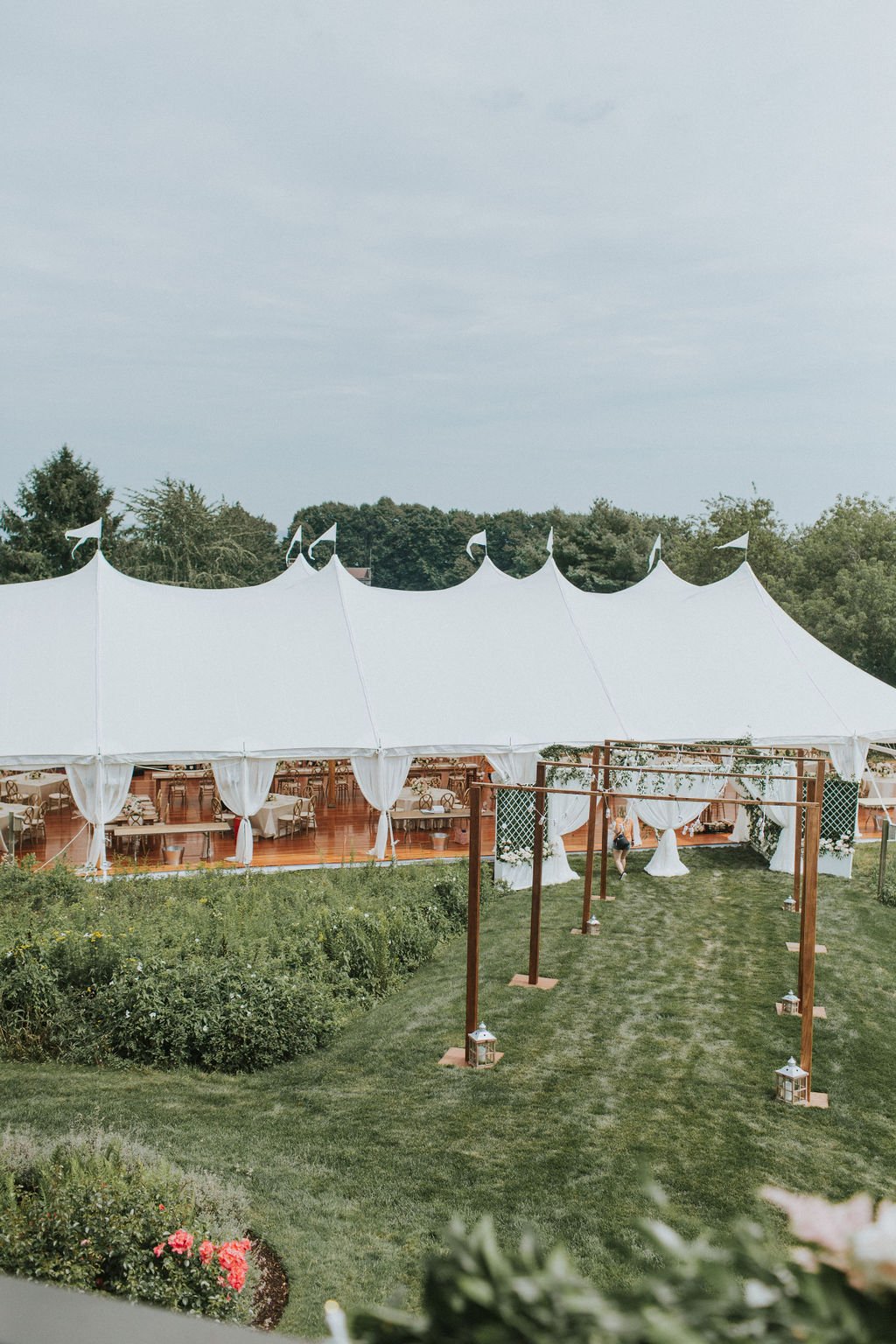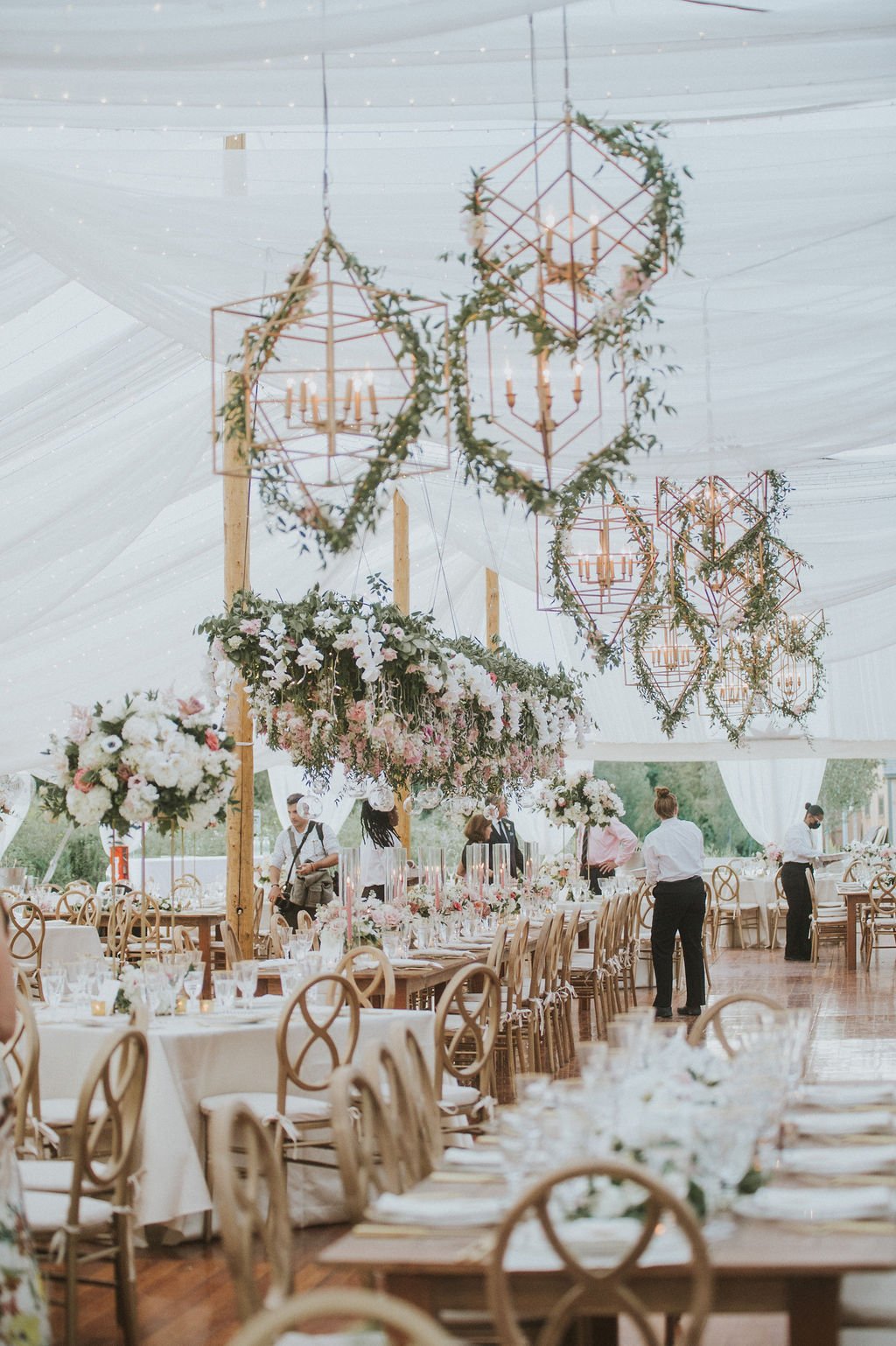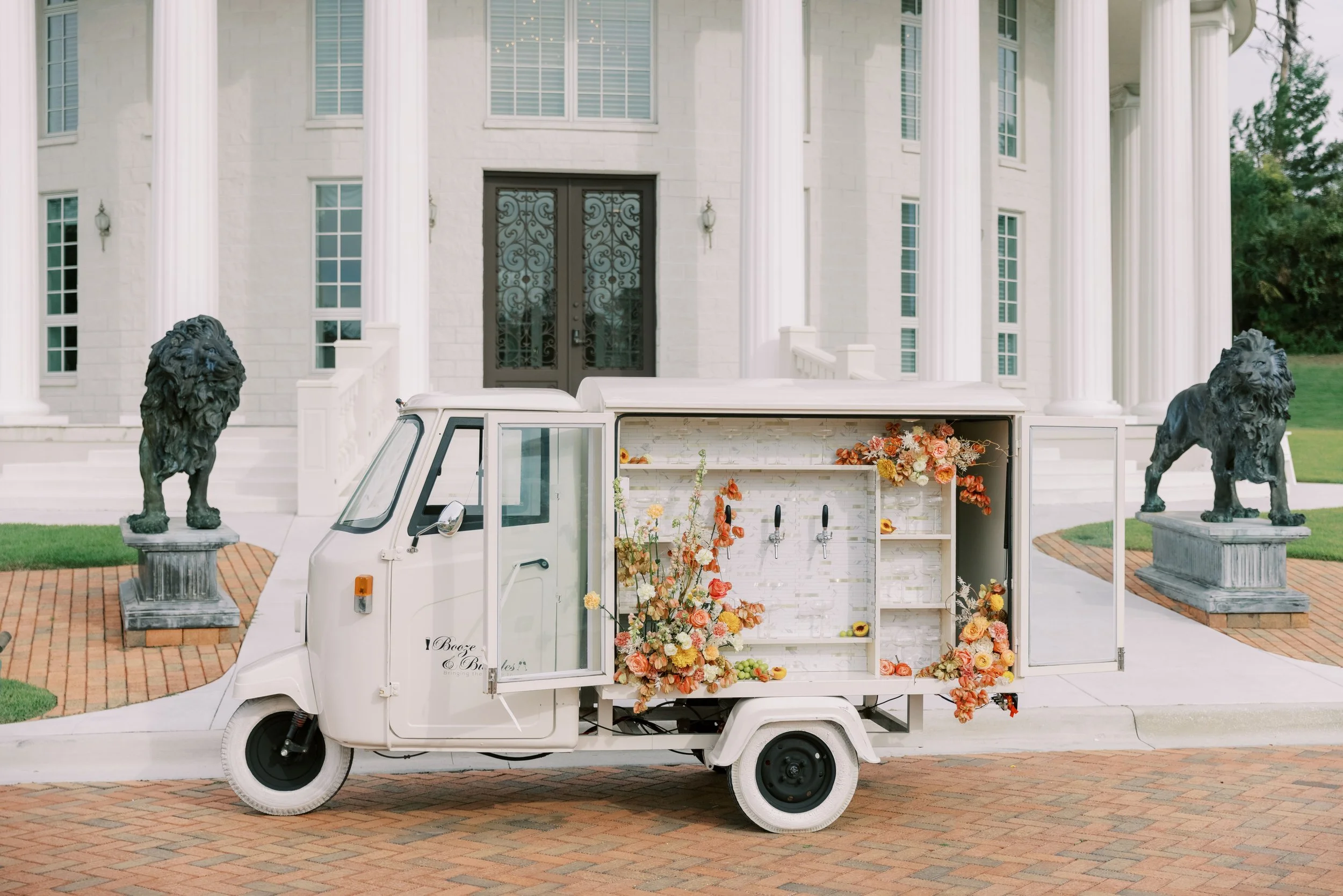Your Wedding Guide To: Tents
Tents provide a tremendous amount of versatility to your wedding day! We know the topic can be a bit overwhelming…What size? What type? What am I forgetting? Trust us, you can totally tackle this! We will lay it all out, so you know exactly what you need, and what not to forget! So go and book that dream venue location, and then come back here for the rundown on how to select the perfect tent!
IMPORTANCE OF TENTS
When you decide to rent a tent, you are able to remove some of the burden related to having an outdoor wedding. Also, let’s be real here, we are OBSESSED with tents, when done right. The tent doesn’t have to just be for a rain plan, it can be your venue. Although we love open-air al fresco style dining, there is nothing quite like hanging florals and bistro lighting inside a stunning sailcloth tent. Now you get to have that wedding you’ve always dreamed about, without having to worry about the blistering sun cooking your guests or the typical Florida 3PM rain ruining your decor! Plus, instead of only having tables to decorate, you now have a full tent to use as a backdrop for the gorgeous and luxurious installations that are covering your Pinterest board! If you need installation inspiration, you can head over to our Installations blog for tips and ideas!
CHOOSING THE RIGHT SIZE
Your rental company will be able to help you select the right size of tent, but we want to equip you with the sizing details so that you can have an idea of what you're looking for and what to budget for!
Your tent area (square feet) needs to account for each of the following:
10’x10’ area (100 sq. ft.) for every 60in round table of 8 guests
10’x10’ area (100 sq. ft.) for every 8ft head table of 4 bridal party members
10’x10’ area (100 sq. ft.) for every buffet table (if not plated)
Dance Floor (sq. ft. based on guest count)
DJ or Band (ask them for sq. ft. needed)
Once you add up the total square footage for each category, you will know what size tent you need! One thing to note, the wider a tent is, the higher the ceilings are. So if you need a tent that is 1,600 sq. ft., we recommend a 40’x40’ vs an 80’x20’. Last thing you want is for you and your guests to feel claustrophobic because of the tent ceiling height! Also, when planning your tent remember you may want a photobooth, a lounge area, 2 bars instead of one, a large welcome table area, or even a delicious and over the top dessert and coffee display. Always add in extra space, you will want it!
TYPES OF TENTS
Frame:
These tents are perfect for when you need to maximize the space where you are placing them. They are also the most popular! These tents can be placed on any form of ground and do not need to be staked in. Most rental companies will use weights to anchor on all frame pieces or at least in the corners outside of the tent. You also gain space under the tent as well, because there are no center poles. Just like with pole tents, you have options for sizes, and length of time that they can stay up. You can also choose if you want them to be white or a stunning clear top covering!
Sailcloth:
Perhaps the prettiest option (and definitely our favorite!), a sailcloth tent consists of a sheer white vinyl that allows for light to radiate out.These beauties also have gorgeous detail and coloring so you don’t necessarily have to add any draping, but definitely lighting! Just like pole tents, sailcloth tents come in varying sizes, so that you can find the perfect one for your wedding day needs. Sailcloth tents also need to be on grass or some form of turf as they can’t be staked into any solid ground.
Pole:
A commonly used tent type, the pole tent is one that has poles around the perimeter, and also some in the center. The poles are anchored into the ground, or secured with concrete blocks if on solid ground like concrete or asphalt. These tents come in a vast variety of sizes and can be left up for several days if needed. We highly recommend grass or turf when using these tents as staking in solid ground can be more pricey and logistically more difficult.
Structure:
The most versatile as far as size options and permanence is the structure tent. These tents are extremely durable, and can be left up indefinitely. While they can be used for weddings, they are more commonly used for events like concerts and markets.
High Peak:
This type of tent is essentially a small tent with a high pointed ceiling. Depending on the setting, it can accommodate a group of 10-30 people. These types of tents can also be used as additional covered spaces for things like food.
THINGS TO REMEMBER
Sides:
You have a few different options when it comes to sides for your tent, if that is what you want and/or need. There are solid sides, clear ones, and even ones with windows. Depending on the look and feel that you are going for, and your anticipated weather, you can choose which option works best for you! It is always a good idea to have them on your order, because even if it isn’t raining sometimes extreme winds can still affect the space under your tent.
Electricity:
You will want to make sure that you have proper connections for electricity! Whether you are running lines to a building on site, there are outdoor connections, or you rent a generator, you will need to work with your venue to know what options you have. Then, make sure to rent plenty of extension cords! Depending on the style of lighting, entertainment, and catering needs, generators are always a good idea and you should check with your DJ/Band, lighting company, photobooth company, as well as your caterer to see what they specifically need.
Weight Limits:
If you are planning to hang any lighting, draping, or floral installations from the ceiling of the tent, be sure to know what the weight limits are. There are different options for hanging greenery directly from your lighting depending on the weight, or your lighting/rental company can install wires for your florist to use. This means collaborating with your rental company, and florist (if floral installations), to ensure that your dream installations won’t be too much for your tent!
Staking Options:
Double check with your venue about your options for staking down the tent. Some venues do not allow you to put holes in the grass, so you have to opt for sand/water barrels, or concrete blocks. Your rental company will steer you in the right direction, but it is up to you to know what your venue requires and then that will determine your style of tent!
Vendor Access:
Wherever your tent is going to be placed, your vendors will need to be able to access it with their vehicles and/or equipment. They will also need to be able to maneuver around the tables, chairs, and other vendors, to ensure that everything comes together. Not to mention they will need time, maybe even an extra day or 2 to set it up! Especially if you have detailed lighting or installations, the tent will need to be up the day before, so make sure you talk through all of this with your venue, planner, and vendors involved during a walkthrough! All you have to do is make sure that they have the time and space they need to do their thing, and you will be good to go!
Are tents REALLY necessary though? Like do I have to? In our humble, yet experienced opinion, yes! And truly, they are one of our favorite venue options for weddings and events. Forget the rain plan, plan your wedding to be under the tent because you want it and know how beautiful it is!
If you are having an outdoor wedding, save yourself the next level of stress and book the tent. While you may regret NOT having one, we can almost guarantee that you will not regret renting one! Plus you will still love your back-up plan, even though you may love the idea of al fresco dining!!









